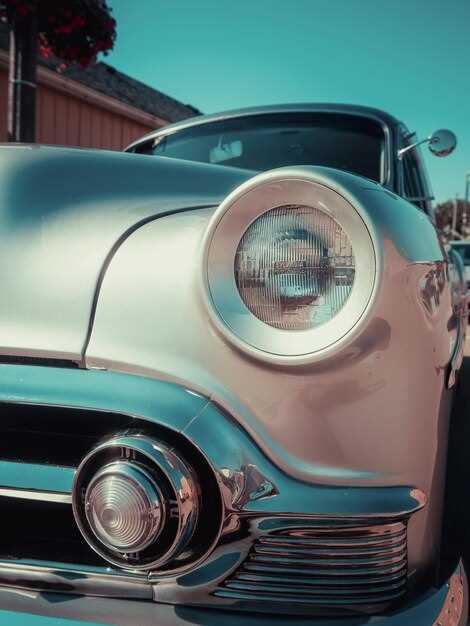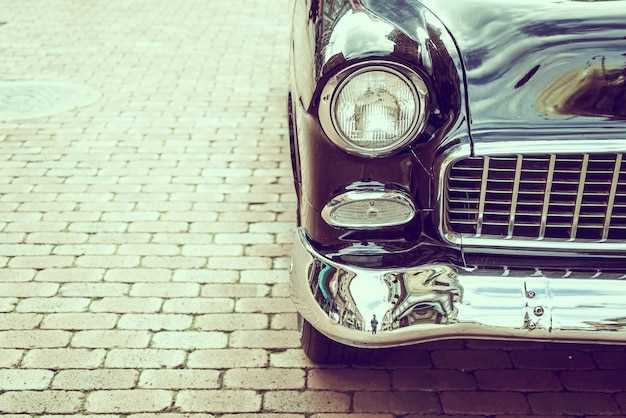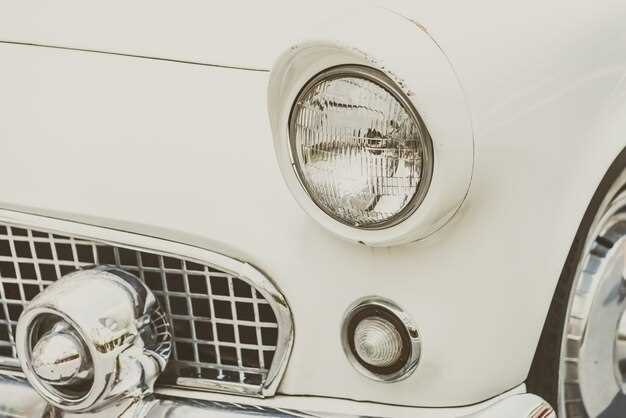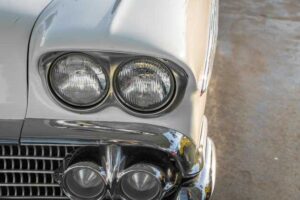Appreciating classic cars goes beyond mere aesthetics; these vehicles significantly shape pop culture from the 1920s to today. Their design and performance capture imaginations, inspiring movies, music, and fashion trends. Collectors and enthusiasts drive this passion, ensuring that classic cars remain symbols of freedom and individualism.
From the exuberance of the Roaring Twenties, where the Ford Model T revolutionized personal transportation, to the rebellious spirit of the 1960s epitomized by the Mustang, classic cars define cultural moments. Films like “American Graffiti” and “Fast Times at Ridgemont High” showcase these vehicles, embedding them in cinematic history and influencing youth subcultures.
In the realm of music, genres like rock ‘n’ roll and pop often celebrate classic cars. Songs such as “Little Deuce Coupe” by The Beach Boys highlight the allure of speed and style, linking automotive culture with youthful dreams. This intertwining of cars and music continues to be a powerful force in shaping identities and fostering communities.
Classic cars also influence fashion trends, with styles from the 1950s evoking a sense of nostalgia and elegance. Designers draw inspiration from car shapes and colors, blending automotive elements into clothing and accessories. As pop culture evolves, classic cars remain a steadfast symbol of creativity and innovation, ensuring their relevance in contemporary society.
How 1950s Classics Shaped Rock ‘n’ Roll Identity
Classic cars from the 1950s, such as the Chevrolet Bel Air and Ford Thunderbird, became synonymous with the rock ‘n’ roll movement, directly influencing its identity. These vehicles reflected the era’s spirit of rebellion, freedom, and youthful exuberance, becoming symbols of the lifestyle that rock ‘n’ roll embodied.
Musicians linked automobiles to their lyrics and performances. Chuck Berry’s “Maybellene” featured a thrilling race between cars, highlighting the adrenaline and excitement associated with both rock music and driving fast. This connection established a culture where cars became an integral part of the rock ‘n’ roll narrative.
The design aesthetics of 1950s classics, with their bold colors and sleek curves, resonated with the vibrant energy of rock music. Album covers and promotional materials often showcased these cars, reinforcing the visual connection between rock stars and automotive culture. For example, Elvis Presley was frequently photographed next to his iconic automobile, which helped elevate his rock ‘n’ roll persona.
Additionally, car culture contributed to the lifestyle of young people who embraced rock ‘n’ roll. Drive-in theaters and car shows became popular venues where music and automobile enthusiasts gathered. Events often featured live performances, blending music and automotive appreciation into a cohesive experience that defined youth culture in the 1950s.
Through films and music videos, classic cars further cemented their role in rock ‘n’ roll. Movies like “Rebel Without a Cause” showcased the rebellious spirit of youth, using cars as symbols of freedom and defiance against societal norms. This cinematic portrayal influenced musicians and fans, creating a shared identity centered around both music and automotive passion.
The influence of 1950s classic cars on rock ‘n’ roll identity continues to resonate. Contemporary artists often evoke this era, drawing inspiration from both the music and the vehicles, ensuring that the legacy of that period thrives. Rock ‘n’ roll, thus, remains intertwined with the allure and cultural significance of these iconic automobiles.
The Role of Muscle Cars in 1960s and 1970s Counterculture
Muscle cars became symbols of rebellion and freedom in the 1960s and 1970s. These vehicles, with their powerful engines and aggressive designs, represented a break from traditional norms and a push for individuality.
Automakers like Ford, Chevrolet, and Dodge produced remarkable models such as the Ford Mustang, Chevrolet Camaro, and Dodge Charger. Their sleek lines and roaring engines captivated the youth, fueling a desire for speed and performance. This allure made them a perfect fit for the counterculture movement, where expressing personal identity was crucial.
The muscle car culture intertwined with music and film, linking its image to the era’s youth movements. Iconic films like “American Graffiti” and “Bullitt” showcased these cars, elevating them to cultural icons. Soundtracks filled with rock and roll underscored the thrill of owning and driving these machines. Events like car shows and drag races became social gatherings where individuals could showcase their vehicles, further solidifying the bond between muscle cars and community.
Table 1 highlights key muscle car models and their impact during this era:
| Car Model | Year Released | Engine Power (HP) | Cultural Significance |
|---|---|---|---|
| Ford Mustang | 1964 | 271 | Symbol of freedom and youth culture |
| Chevrolet Camaro | 1966 | 295 | Competition against the Mustang; friendship and rivalry |
| Dodge Charger | 1966 | 425 | Featured in classic films; emblem of American muscle |
Local car clubs thrived, creating a sense of community and belonging. They encouraged modifications and personal touch on vehicles, reinforcing the ideals of self-expression. The muscle car lifestyle became intertwined with the broader counterculture quest for authenticity and autonomy.
In summary, muscle cars defined an era, shaping not only the automotive landscape but also reflecting the values of a generation seeking change. The blend of exhilarating performance and cultural significance solidified their place as icons of the 1960s and 1970s counterculture.
Iconic Film Appearances of Classic Cars in the 1980s
The 1980s celebrated classic cars on the silver screen with unforgettable film appearances that shaped pop culture. Here are some standout examples that left a lasting impression.
DeLorean DMC-12 in “Back to the Future” (1985)
This car, with its gullwing doors and futuristic design, became a symbol of time travel. Its role in the film made the DMC-12 an icon, inspiring a wave of fascination with both the vehicle and the concept of time travel.
Chevrolet Camaro in “Transformers” (1980s animated series)
The Camaro was not just a car; it transformed into Bumblebee, a beloved character. This association cemented the Camaro’s status in pop culture as a favorite among fans of the franchise.
Ford Mustang in “Gone in 60 Seconds” (1974, but relevance continued into the 1980s)
The Mustang, especially the Fastback, became synonymous with high-speed chases. Its appearance in various films during the 80s kept the classic car’s legacy alive, showcasing its power and appeal.
Pontiac Firebird Trans Am in “Knight Rider” (1982-1986)
This sleek car, equipped with advanced technology, won the hearts of viewers. KITT’s personality gave the Trans Am an extraordinary presence that resonated throughout the decade.
Volkswagen Beetle in “Herbie, the Love Bug” (1980s remakes)
This charming car, with its mischievous personality, charmed audiences. Herbie’s antics in the films kept the Beetle in the spotlight, rekindling nostalgia and admiration for this classic vehicle.
The influence of these classic cars in 1980s films shaped consumer preferences and enhanced the allure of automotive culture, leaving an imprint still felt today.
The Impact of Classic Car Shows on Nostalgia Marketing in the 1990s
Classic car shows during the 1990s played a pivotal role in shaping nostalgia marketing strategies that targeted consumers yearning for the past. These events attracted car enthusiasts and families, creating a vibrant marketplace for brands eager to connect with a nostalgic audience.
Brands such as Coca-Cola and VW effectively used these shows to launch campaigns that invoked fond memories of simpler times. A well-placed vintage advertisement or sponsorship at a classic car show resonated with attendees. Integrating nostalgic imagery captured the essence of the era, successfully linking products to cherished memories.
Classic cars represented more than just vehicles; they symbolized freedom and adventure. Marketers harnessed this sentiment by associating their products with the excitement these cars evoked. For instance, campaigns featuring retro music complemented the classic aesthetics of the automobiles, enhancing emotional connections.
Promotional materials, including brochures and merchandise, showcased vintage automotive designs and colors, amplifying the nostalgic experience. Brands that visually appealed to consumers’ fondness for the past witnessed increased sales and brand loyalty. Utilizing classic car imagery in TV commercials or print ads became a standard practice, ensuring a memorable message.
The accessibility of car shows allowed local businesses to participate in nostalgia marketing as well. Food vendors and retailers incorporated vintage themes into their offerings, appealing to demographics seeking a taste of their youth. Custom merchandise featuring classic cars became collectibles, reinforcing the connection between vintage auto culture and consumer behavior.
As the decade progressed, the influence of classic car shows on advertising strategies grew. Advertisements that integrated classic cars became synonymous with Americana, allowing brands to invoke strong emotional responses. Companies that recognized this trend and adapted their messaging effectively captured a loyal customer base.
Brands tapping into the nostalgia wave during the 1990s not only boosted their visibility but also established lasting ties with their audience. Embracing the classic car culture at such events proved invaluable, shaping the marketing landscape for years to come.
Social Media’s Role in Reviving Interest in Vintage Vehicles Today
Showcasing vintage vehicles on platforms like Instagram and TikTok effectively captures the attention of enthusiasts and casual viewers alike. Utilizing high-quality photos and engaging videos allows users to share their passion for classic cars, drawing more individuals into the community. Hashtags such as #VintageCars and #ClassicCarRestoration amplify visibility and connect users with similar interests.
Engagement through live streams and Q&A sessions fosters interaction between car owners and fans. Mechanics and restorers can showcase their work processes, offering valuable insights while inspiring others. These interactions often motivate viewers to dive into their own restoration projects or to consider purchasing classic models.
Influencers and content creators play a significant role in this revival. By reviewing vintage vehicles and attending car shows, they build excitement and curiosity around these gems. Their platforms serve as a virtual marketplace, where potential buyers can learn about available options and the latest trends.
Communities on Facebook and Reddit unite vintage car lovers, providing a space to share experiences, resources, and advice. Members can ask questions, share project updates, or organize meetups. This camaraderie encourages newcomers to explore classic cars and learn about their rich histories.
Social media campaigns by car manufacturers and restoration businesses also attract attention. Promotions, contests, and exclusive glimpses into the restoration process entice users, leveraging the nostalgia associated with vintage vehicles while also appealing to a younger audience.
Ultimately, social media bridges the gap between generations of car enthusiasts. By highlighting the aesthetic and historical importance of classic vehicles, platforms inspire a renewed appreciation and commitment to preserving these automotive treasures.
Analyzing the Continuation of Classic Car Aesthetics in Modern Fashion
Incorporate vintage automotive elements into your wardrobe by choosing pieces that reflect the sleek lines and bold colors of classic cars. Look for bomber jackets with retro patches that echo the motifs found on car hoods, or opt for high-waisted trousers reminiscent of 1950s car culture.
Colors play a significant role in this aesthetic. Rich hues like cherry red, cobalt blue, and classic black evoke the spirit of classic cars and can be easily integrated into modern outfits. Consider accessories such as belts and bags that mirror the shine of vintage chrome finishes to create a cohesive look.
Textiles are crucial. Leather remains timeless. Incorporate leather jackets and accessories that mimic the classic upholstery found in vintage models. Canvas and denim also work well, offering an edgy, rugged appearance that pays homage to car enthusiasts.
Patterns and graphics inspired by classic car designs can enhance your style. Seek out clothing with retro logos or stripes reminiscent of racing stripes to channel a nostalgic vibe. Graphic tees featuring vintage cars can serve as great conversation starters.
Footwear completes the aesthetic. Choose high-top sneakers and loafers that reflect the era’s influence. Brands often release limited-edition collaborations that draw direct inspiration from iconic vehicles, providing a stylish connection to the past.
Incorporating eyewear can elevate the look further. Cat-eye sunglasses and aviators evoke a retro feel, perfectly aligning with the classic car theme. Brands that celebrate automotive culture often develop collections that resonate with fashion enthusiasts and gearheads alike.
By thoughtfully mixing these elements, your wardrobe can capture the allure of classic cars while remaining distinctly modern. This fusion of style invites creativity and personalization, making it a compelling trend in contemporary fashion. Aim for a balanced approach that honors the past while staying relevant in today’s fashion scene.






